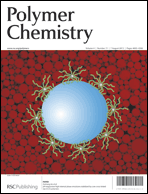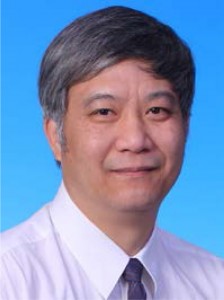This month sees the following articles in Polymer Chemistry that are in the top ten most accessed for June:
Thiol-ene “click” reactions and recent applications in polymer and materials synthesis
Prof. Andrew Brian Lowe
Polym. Chem., 2010, 1, 17-36
DOI: 10.1039/B9PY00216B
New methods of polymer synthesis
Christopher Barner-Kowollik, Jean-François Lutz and Sébastien Perrier
Polym. Chem., 2012, 3, 1677-1679
DOI: 10.1039/C2PY90007F
2-(2,3,4,5,6-Pentafluorophenyl)-1H-benzo[d]imidazole, a fluorine-rich building block for the preparation of conjugated polymer donors for organic solar cell applications
Marios Neophytou, Heraklidia A. Ioannidou, Theodosia A. Ioannou, Christos L. Chochos, Solon P. Economopoulos, Panayiotis A. Koutentis, Grigorios Itskos and Stelios A. Choulis
Polym. Chem., 2012, 3, 2236-2243
DOI: 10.1039/C2PY20198D
Supramolecular three-armed star polymers via cyclodextrin host–guest self-assembly
Bernhard V. K. J. Schmidt, Tobias Rudolph, Martin Hetzer, Helmut Ritter, Felix H. Schacher and Christopher Barner-Kowollik
Polym. Chem., 2012, Advance Article
DOI: 10.1039/C2PY20293J
UCST-driven self-assembly and crosslinking of diblock copolymer micelles
Peter J. Roth, Thomas P. Davis and Andrew B. Lowe
Polym. Chem., 2012, 3, 2228-2235
DOI: 10.1039/C2PY20204B
Three new conjugated polymers based on benzo[2,1-b:3,4-b′]dithiophene: synthesis, characterization, photoinduced charge transfer and theoretical calculation studies
Shaojie Chen, Qiuyu Zhang, Hepeng Zhang, Junwei Gu, Mingliang Ma, Tiejun Xin, Yanyang Zhou, Jian Zhou and Qing Liu
Polym. Chem., 2012, 3, 2244-2253
DOI: 10.1039/C2PY20122D
Diels–Alder “click” reactions: recent applications in polymer and material science
Mehmet Atilla Tasdelen
Polym. Chem., 2011, 2, 2133-2145
DOI: 10.1039/C1PY00041A
Single-chain polymer nanoparticles via reversible disulfide bridges
Bryan T. Tuten, Danming Chao, Christopher K. Lyon and Erik B. Berda
Polym. Chem., 2012, Advance Article
DOI: 10.1039/C2PY20308A
Fluorescence resonance energy transfer in recognition-mediated polymer-quantum dot assemblies
Vikas Nandwana, Brian Fitzpatrick, Qian Liu, Kyril M. Solntsev, Xi Yu, Gülen Yesilbag Tonga, Serkan Eymur, Murat Tonga, Graeme Cooke and Vincent M. Rotello
Polym. Chem., 2012, Advance Article
DOI: 10.1039/C2PY20353G
Photo-responsive systems and biomaterials: photochromic polymers, light-triggered self-assembly, surface modification, fluorescence modulation and beyond
Francesca Ercole, Thomas P. Davis and Richard A. Evans
Polym. Chem., 2010, 1, 37-54
DOI: 10.1039/B9PY00300B
Why not take a look at the articles today and blog your thoughts and comments below.
Fancy submitting an article to Polymer Chemistry? Then why not submit to us today!

















